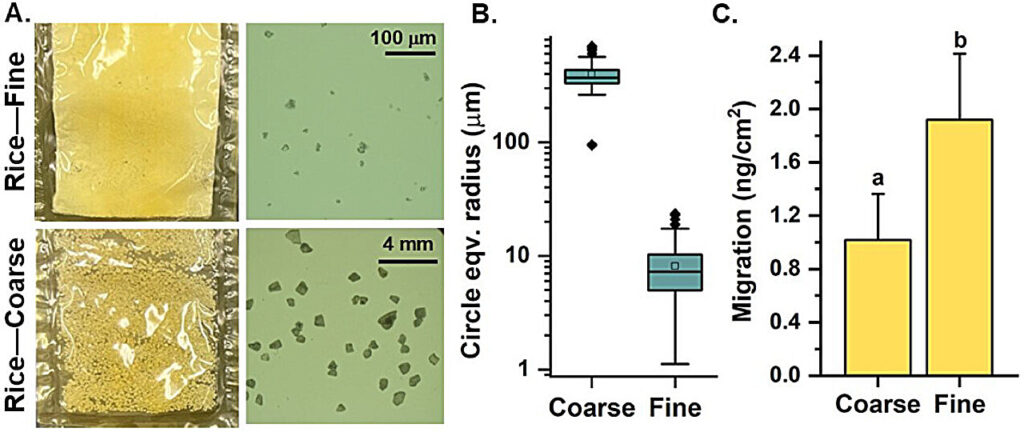A team of research scientists led by US Food and Drug Administration chemist Timothy Duncan has found evidence of silver nanoparticles embedded in packaging used as an antimicrobial agent seeping into the dry food it is meant to protect. In their paper published in the journal ACS Food Science & Technology, the group describes how they created their own packaging with embedded silver nanoparticles and tested it with various foods, and what they learned by doing so.
Silver has been a known antimicrobial agent for centuries, but it has only recently been made into nanoparticle-sized grains for use in food packaging. Prior research has shown that when such packaging is used for liquid or gelatinous foods or beverages, the nanoparticles can easily seep into and permeate the food. It is still not known if such particles can cause harm to people who consume them—testing is still ongoing, which is why they are banned in many countries, including the U.S. In this new effort, the research team wanted to know if such particles also find their way into dry foods.
To find out, the team created samples of silver nanoparticles and embedded them in polyethylene film wraps, which could hold various types of food items. They tested wheat flour, slices of cheese, ground rice and spinach leaves. They then stored the packages in ways normal to consumers’ homes.
The team then brought the packages into their lab for testing with mass spectrometry. In so doing, they found that the nanoparticles had made their way to all the foods, though to varying degrees. They found, for example, that there was far more contamination of the cheese than there was with the spinach leaves. They noted that the more surface contact between the food and the packaging, the more contamination. They also noted that most of the contamination was confined to the surface of the food, which meant that most of it could be easily rinsed away.


